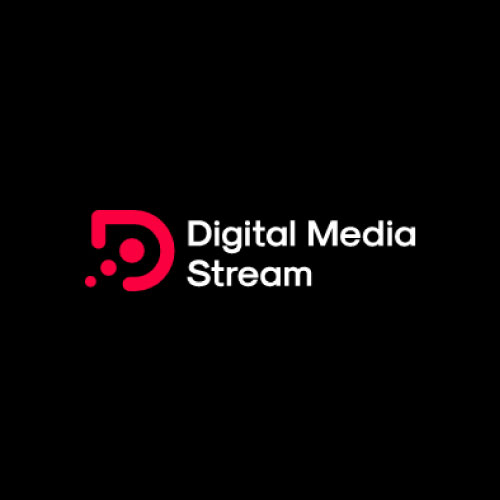
B2B PPC can be difficult to get right for a lot of companies because of low conversion rates, lack of data and sometimes a grey area when it comes to the keywords you should be investing the majority of your budget in. Too many B2B PPC agencies and marketers focus purely on conversions instead of tying everything back to revenue, the ultimate goal of marketing. In this article I’ll talk about some practical ways you can adapt your B2B PPC campaigns to focus more on revenue generation.
What is a revenue focused PPC strategy?
Revenue marketing is a buzzword that has lots of cross-over with lead generation and demand generation. Revenue marketing is a marketing strategy that focuses on which leads actually turn into opportunities and eventually paying clients.
Revenue generation is after all is the whole point of marketing. Everything from brand building to cold-calling eventually all ties back into business growth and revenue generation.
The benefits of ‘revenue marketing’ or focusing on revenue is that you can build a feedback loop from sales to improve your marketing efforts. You can utilise data from your CRM system and your attribution reports to re-distribute your marketing efforts and spend into areas that have proven fruitful when it comes to generating revenue.
Running Revenue focused B2B PPC campaigns
Google Ads gets the majority of its business from B2C companies, usually large e-commerce companies that have tight margins and spend millions on PPC campaigns to capture the instant demand of consumers online. This led Google to develop an ad platform that was initially designed for this B2C audience making it trickier to run for a B2B company.
Often B2B companies struggle with PPC because the volumes of ‘converters' can be very small in comparison to B2C and this means it's difficult to optimise these campaigns.
A Lack of data
One of the major challenges faced by B2B PPC strategists is the lack of conversion data that can be mined to optimise campaigns. This lack of data means it's difficult to train algorithms to optimise campaigns for not only conversions but conversions that drive revenue.
Unlike B2C and e-commerce campaigns, most B2B companies do not assign a monetary value to a conversion on the website such as a form submission. On an e-commerce website the cost of the sale can be directly attributed and therefore automated bidding strategies can be trained a lot easier. Whereas if a 1 form submission is exactly the same as the other even though one may be a terrible fit and the other a great fit means that B2B PPC can be unpredictable.
Automated Bidding Strategies in Google
Generally it’s recommended to use automated bidding strategies in Google Ads because it can provide a lever of technical optimisation that is difficult and time consuming to replicate manually. For example an automated bidding strategy will adjust bids based on ad performance in different regions, times of day and other auction prices.
Because automated bidding is generally recommended, it’s also common to use ‘optimise for conversions’ as the main bidding strategy. This means that the bidding on certain keywords in certain locations at certain times will be adjusted to optimise for those conversions.
There are a few issues with this for B2B PPC, most of which come down to the previous point made around the lack of conversion data available to B2B companies in comparison to B2C. A B2C PPC campaign could get thousands of conversions in a day vs a B2B campaign may only get 1 or sometimes none in one day. This lack of data means it's difficult to train the algorithms and therefore it can skew the optimisation based on only 1 or 2 conversions and in turn this automated strategies are not as effective in the short-term.
Top Tip: One way to overcome this issue if you have a lack of conversion data is to start by maximising clicks before switching to maximise for conversions. This way you can generate more conversions before you let Google optimise the campaigns based on this information.
Going beyond conversions
A conversion for a B2B company is typically a website form submission, whether that's signing up for a SaaS tool or just contacting sales, generally this is the most common conversion action that is tracked in Google Ads and optimised for on a B2B website. This is called Layer 1 Conversion Optimisation and is the most basic form of optimising automated bids.

The problem for a lot of companies, especially technology companies is that a conversion doesn’t always indicate they are a good fit for your business and/or product. This can be down to a number of factors but this raises an issue with how google ads manages your bidding strategy as it does not optimise based on conversion quality or whether or not that conversion is likely to generate revenue for your business
Using Micro-Conversions & Smart Goals To Train Google
One way to get around this issue of a lack of conversions is to introduce micro-conversion data into the equation. A micro conversion can be something like the number of pages viewed on your website, or it could be viewing a particular page or staying on your website for longer.
These leading indicators can be used as faux conversions to train the algorithm without actually tracking them as a conversion. By giving these micro-conversions an arbitrary monetary value you can essentially train the algorithm without having to wait for a macro-conversion. This is called Layer 2 Conversion Optimisation.
.jpeg)
This method of optimisation can be viewed as a way of scoring your clicks and training the algorithm to optimise for the most engaged users without the need for them to actually fill in a form on your website.
Optimising for Lead Quality & Revenue
This initial phase of conversion optimisation is useful but it doesn't solve the issue of optimising campaigns for leads that are of better quality than others and are more likely to generate revenue, to do this you need to integrate Google Ads with your CRM system.
Connecting conversions to your CRM is essential for training the Google algorithms based on conversion data in your CRM, not just whether or not someone filled in a form or not. This is called Layer 3 Conversion Optimisation. This is the most efficient way to optimise your bids based on revenue generation and quality of leads using 1st party data.
.jpeg)
The problem with relying on Layer 1 or Layer 2 conversion data is that it doesn’t give much indication of quality and revenue potential. It normally will just be a binary yes/no they completed the main call to action on the website or a micro-conversion.
As CRM systems such as HubSpot improve their integration with Google Ads you can now start to train the Google algorithms using Layer 3 optimisation based on data from within your own CRM.
An example of this is creating an event in HubSpot for when a lead becomes an Opportunity - you can then feed this back to Google and assign a value to this action. This value tells the algorithm that this particular lead was valuable and of high quality and therefore it should optimise the bidding process based on this data.
This additional data provides information on quality and therefore a focus potential revenue generation.
Salesforce - Importing offline conversions
If you are using salesforce to track opportunities and closed won deals you can import your closed won deals back into Google Ads and sync the GCLID - Google Click ID to match the click with the opportunity in salesforce, this will help close the loop and optimise for the closed won deals.
HubSpot - Syncing Lifecycle event changes
With HubSpot you have a sleeker integration where you can sync events back to Google Ads just like you can sync conversion goals from Google Analytics. There is a useful article from HubSpot talking about the details here. What this enables you to do is sync Google Ads when a contact becomes an MQL or an Opportunity or a Customer. This is treated as a conversion in Google Ads and it optimises the bidding strategy accordingly therefore adding another layer of optimisation.
A Manual PPC Attribution Analysis
An additional way to build a revenue focused B2B PPC strategy is reliant on having run PPC campaigns previously with some form of tracking and attribution in place. This is because you are going to need to analyse this data to look to see what actually is driving revenue vs just conversions.
Reviewing Closed Won Deals
One manual but useful way to evaluate which campaigns have been driving quality leads and generating revenue is to review your closed won deals in Salesforce or HubSpot. For this to be remotely useful you will need to have had some form of attribution and reporting set up to track where your leads came from, if you don’t have this configured then this should be your priority before embarking on any further PPC campaigns.
This is where going beyond conversions is key. As a lot of PPC agencies and also in-house marketing teams do not really go beyond generating leads or MQLs as they see this is the point that it is handed over to sales.
To be honest this approach to PPC is as much a shift in marketing mentality as anything else. It’s the desire to generate revenue and accept that your responsibility goes beyond generating marketing qualified leads.
Review keyword triggers that drive revenue
The importance of this analysis is to identify potential trends in keywords that lead to closed won deals. You will often see a trend from one theme to another. This will also typically tie back to your product positioning and product strengths.
To give an example, if a tech product can do 10 things and you run ads for those 10 things but you only ever win deals in relation to 2 of those things you can start to get an idea of where you sit in the market and also where you need to improve - and more importantly for the PPC campaigns where to invest money to drive short-term growth.
This isn’t to say that you will never get leads from the other areas, in fact you can use that data to improve the product and then eventually you will start to win deals from other ad groups too.
Recording closed lost reasons
This is a process thing really and something that should be done by the sales team. It’s really important to have a strong feedback process here so that marketing teams can optimise campaigns based on what happens at the bottom of the funnel as they say.
If for example a lead comes from an Ad and goes all the way through the sales funnel but is closed because of a product feature rather than fit then you shouldn't change the marketing approach. Having a blanket rule of thumb that all closed deals should be avoided in the future will lead to missing out on valuable information and also potential revenue.
Tightening your lead qualification criteria
One way to reduce the scope of the feedback process is to agree to a really tight definition of a Marketing Qualified Lead. This way the feedback is built in from the start. You will still need to have some form of feedback loop, especially if you are trying out a new tactic, strategy or exploring a new segment, but using a tightly defined criteria of qualification means you don’t need to have as many ad-hoc discussions because everybody knows what an MQL is vs an SQL etc.
Focusing on revenue & conversion ‘quality’ from PPC
What this strategy comes down to is really just creating a tight feedback loop with sales from both a working relationship standpoint but also a data standpoint.
It’s easy as a marketing professional to only really focus on what you believe is under your control which is what leads to an over-reliance on recording conversions and leads, and a lack of focus on the quality and feedback from sales on those leads.
I’ve mentioned the main steps above but I’ve put it into a short list of steps below to outline what you need to do to be able to implement a B2B PPC strategy that focuses on revenue generation rather than just conversions.
- Implement correct attribution - connect you CRM with Google Ads
- Implement micro conversions and assign monetary values
- Gain feedback from Closed Won and Lost deals
- Adjust keyword targeting according to feedback
At the end of all of this it comes back to marketing to the keywords that drive the most revenue and making sure your bids are automatically optimised for these keywords.
For B2B SaaS companies, if your product is evolving rapidly and/or you are defining or exploring a new product category this process is essential as market research. You also need to ensure that you are getting the best return on investment or return on ad spend (ROAS) when you are tasked with lead and demand generation.
Hopefully this article has been useful, if you have any questions or want to know a bit more about how to actually set this up then feel free to get in touch.
Find a B2B SaaS Expert
We've collected a directory of B2B SaaS experts and agencies that we've reviewed and categorised based on service and specialism for your review.














